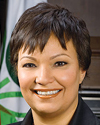Industry groups are hopeful that Senate committee approval of a bill to reauthorize the Clean Water and Drinking Water State Revolving Funds bodes well for final congressional approval this year. Industry has had a long wait: the Clean Water SRF was last reauthorized 22 years ago and the Drinking Water SRF was last approved in 1996. Congress annually appropriates funds for the SRFs but at lower levels than called for in needs-assessment surveys.
The water measure, which the Environment and Public Works Committee cleared on May 14, would authorize $38.5 billion over five years. Of that, $20 billion is for clean-water funding and $14.7 billion for drinking-water funding. By comparison, 2009 appropriations were $689 million for the clean water SRF and $829 million for the drinking water SRF.
The House passed a comparable bill on March 5, although it only covers the clean-water program. The House Transportation and Infrastructure Committee, which drafted the bill on which the House voted, does not have jurisdiction over drinking water.
With the Senate environment panel’s action, Perry Fowler, director of the Associated General Contractors’ municipal and utilities division, says, “We’re optimistic that we will see it hit the floor and that we will be conferencing a bill that we can have done by the end of the year.”
But some sticking points remain that could stall the water measure, industry officials say. The Senate committee and House bills contain provisions to require Davis-Bacon Act prevailing wages on SRF- financed projects. Some Republican lawmakers have said they oppose the Davis-Bacon provisions. During the Senate committee markup, James Inhofe (R-Okla.) said he might offer an amendment to strip the Davis-Bacon requirements from the bill.

Brewster Bevis, the Associated Builders and Contractors’ senior director of legislative affairs, notes that some smaller contractors “will simply not even attempt to bid” on Davis-Bacon work, which he says can create “a nightmare of bureaucratic red tape and paperwork.”
Another issue likely to generate debate is the set of formulas used to allocate which states get the most funding, says Susan Bruninga, the National Association of Clean Water Agencies’ director of public affairs. Many state officials complain that the formulas, based on needs surveys that are more than two decades old, are out of date and do not reflect current water infrastructure needs.
Industry officials also are pleased the Obama administration’s fiscal 2010 Environmental Protection Agency budget request would hike the clean water SRF to $2.5 billion and the drinking water SRF to $1.5 billion. EPA Administrator Lisa Jackson says the budget “reflects President Obama’s commitment to a new era in environmental stewardship and puts us on a clear path to a cleaner and safer planet.”


Post a comment to this article
Report Abusive Comment